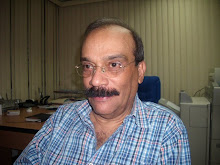The noted American economist Paul
Anthony Samuelson (1915-2009), 1970 Nobel Prize for Economics, wrote a concept
worth having ever present, Samuelson said that "The economic cycle presents
to democratic nations a challenge, almost an ultimatum: either get control
depressions and inflations extreme better than they did until World War II, or
the political structure of society will be in danger." And he added that
"the political strength of a democracy is closely linked to effective
maintenance and strongly stable quality of life and high levels of employment,
to the point that it would be safe to say that the multiplication of
dictatorships and the resulting world War II were due in large part to the
inability of the world to address adequately the economic problem." (1)
Samuelson was very clear that the
Great Depression with unemployment sequel was what caused the political
radicalization of Europe and the United States itself in the first decades of
the twentieth century and so, after the war, published in its books the above
warnings, to help political leaders avoid future repetition of such unfortunate
occurrences.
The origins of inflation in recent years
The thirty-year period between 1945
and 1975, was called the Age of Keynes, a stage characterized by employment
growth, production and economic recovery of countries devastated by World War
II. But from 1975, due to currency manipulation in some countries, especially
Germany, the world economy went into a period of uncertainty and the phenomenon
of inflation and unemployment began to show signs of recurrence. Contributing
to this, the decision of OPEC in 1973, to
suspend the supply of oil to the United States and the countries that had
supported Israel during the Yom Kippur War (October 1973), fact known as the
Arab oil embargo, which caused a violent increase in oil prices and triggered
the recession in the West.
The increase in oil prices created a
new global financial reality, which gave oil countries extraordinary resources
that had never before enjoyed. That immense wealth that came from the major
industrialized countries, especially, as big oil buyers, returned to these
countries in the form of deposits in their banks, as oil countries put that
money in international banking. It is then when it begins to take shape the
debt crisis in developing countries, which would become visible in the
eighties, as banks sought ways to place the new amount of money among the developing
countries. The developing countries were forced to contract loans as not having
to pay the new prices of energy and the new prices of finished products bought
in industrialized nations; this is the origin of the debt.
The facts stated above in the first
instance affect the nations of Latin America, especially Argentina, Bolivia,
Brazil and Peru, countries that experienced hyperinflation processes in the
eighties and nineties of the 20th century. A common element to the
process of hyperinflation in these countries was the external debt crisis; there
came a time when they could not pay their commitments and forced it to devalue
their currencies, a fact that, in my opinion, was the main cause of hyperinflation
in these countries, not excluding, of course, other structural elements.
Solution
The common solution to the problem
of hyperinflation in each of the above countries was the establishment of a
currency peg. That was the key decision of the economic program adopted by the
Minister Domingo Cavallo, in Argentina, in 1991. Similar measures were taken by
Bolivia, which had the highest rate of hyperinflation of the continent in the
eighties and corrected by adopting a fixed exchange rate and fiscal reforms. Peru
followed a similar path, like Brazil and managed to reverse the process of
hyperinflation.
Venezuela should consider the experience of other Latin American
countries
Venezuela, which is on the brink of
hyperinflation, should consider the experience of the Latin American countries
that have already gone through that process and design a control program
hyperinflation. The concept of the stabilization program, unfortunately, is
largely discredited, but may be created a formula to respond to the urgent need
to prevent hyperinflation progress and this necessarily involves the creation
of a new currency with fixed exchange at par the dollar, that I have called the
bolivar gold. The cumulative devaluation in Venezuela is more than 800 000
percent when you consider the price of the market that you cannot say. When a
country reaches that level of devaluation has no alternative but to generate
the confidence needed to restore the balance of the economy and this requires tying
to the international currency of payment, which is the dollar.
(1) Paul
Anthony Samuelson, Curso de Economía
Moderna, páginas 3 y 420, Aguilar, Madrid, 1975, citado por Pablo Rafael
González en Una Idea Concreta para Combatir
la Desocupación, la Doble Jornada y la Media Jornada, página 8, Book Surge
Publishing, 2006, North Carolina, USA.





No hay comentarios:
Publicar un comentario